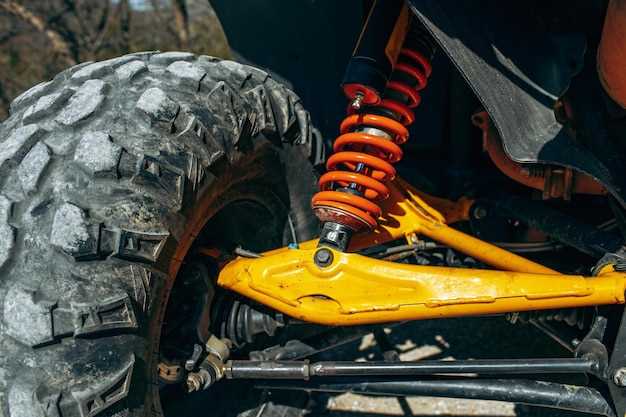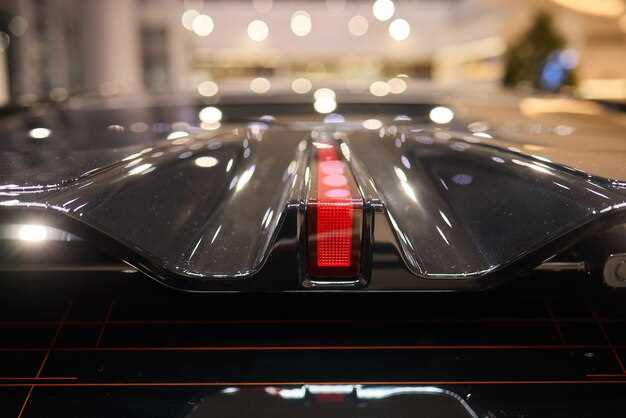
In the world of off-road riding, visibility is crucial, especially during night excursions. Installing LED light bars on your ATV can significantly enhance your ability to navigate difficult terrains after dark. These powerful light sources not only illuminate the path ahead but also increase your overall safety by making you more visible to others.
A properly installed LED light bar can transform your ATV into a reliable machine for night riding. Whether you are traversing dense woods, open fields, or rocky trails, the right lighting setup allows you to clearly see obstacles ahead. Understanding how to install these lights effectively is key to maximizing their performance and ensuring a seamless riding experience.
This guide will provide you with detailed instructions and tips for installing LED light bars on your ATV, ensuring you make the most of your outdoor adventures, even in the dark. From selecting the right LED lights to mounting them securely, we’ve got you covered.
Choosing the Right LED Light Bar for Night Riding

When it comes to enhancing your ATV experience during nighttime, selecting the right LED light bar is essential. The ideal light bar will not only improve visibility but also ensure safe riding conditions. Here are several factors to consider when making your choice.
Brightness Levels: The brightness of an LED light bar is measured in lumens. For night riding, a bar with at least 2,000 to 5,000 lumens is recommended. This range provides sufficient illumination for trails and unpaved paths, allowing you to spot obstacles and navigate safely.
Beam Pattern: Different LED light bars offer various beam patterns, including spot, flood, and combo. A spot pattern focuses light in a narrower beam, ideal for long-distance visibility. In contrast, flood patterns offer a wider spread of light for close-range viewing. For the best results, consider a combination of both, enabling you to see far ahead while maintaining visibility to the sides.
Durability and Construction: Since ATVs often encounter harsh environments, the construction of the light bar is crucial. Look for models made from high-quality materials such as aluminum with a weatherproof rating. This ensures the bar can withstand vibrations, extreme temperatures, and the elements, providing reliable performance during your night riding adventures.
Size and Mounting Options: The size of the LED light bar should be compatible with your ATV’s dimensions and mounting capabilities. Measure the available space on your vehicle to ensure a proper fit. Many light bars come with adjustable mounting brackets that allow for flexibility in positioning, which can significantly enhance your visibility.
Power Consumption: While brightness is important, so is energy efficiency. Look for LED light bars that provide maximum lumens per watt. This consideration will help you avoid draining your ATV’s battery too quickly, allowing for extended riding sessions without the worry of losing power.
By taking these factors into account, you can confidently choose the right LED light bar for your night riding needs, ensuring a safer and more enjoyable experience on your ATV.
Step-by-Step Installation Process for LED Light Bars

Installing an LED light bar on your ATV can enhance your nighttime visibility while riding. Follow this detailed step-by-step process to ensure a successful installation.
Step 1: Gather Your Tools and Supplies
Before you begin, collect all necessary tools and components. You will need a LED light bar, mounting brackets, a wiring harness, screws, a drill, and basic hand tools such as wrenches and screwdrivers.
Step 2: Choose the Mounting Location
Select an appropriate location on your ATV for the light bar. Common placements include the front bumper or the roof. Ensure the chosen spot provides maximum visibility without obstructing your view or the ATV’s functionality.
Step 3: Mount the Light Bar
Using the mounting brackets, secure the LED light bar to the selected location. Align the bar and mark the drill points for the screws. Drill holes carefully to avoid damaging any surrounding components. Attach the light bar and tighten the screws to ensure stability during rides.
Step 4: Connect the Wiring Harness
Locate the wiring harness that came with your LED light bar. Connect the positive and negative wires from the light bar to the corresponding terminals on the harness. Ensure that all connections are secure to prevent any electrical issues.
Step 5: Route the Wires
Carefully route the wiring harness along the ATV frame, avoiding hot components or moving parts. Use zip ties to secure the wires in place and prevent them from getting snagged during your riding adventures.
Step 6: Connect to Power
Connect the wiring harness to the ATV’s battery, ensuring that the positive wire connects to the positive terminal and the negative wire to the negative terminal. This step is crucial for providing power to your LED light bar.
Step 7: Test the Light Bar
Before finalizing the installation, test the LED light bar by turning on the ATV and switching on the lights. Check that the bar operates correctly and illuminates the area as expected.
Step 8: Finalize the Installation
Once tested, secure any loose wiring and ensure that all components are tightly fastened. Make any necessary adjustments to the light bar’s angle for optimal visibility while riding.
By following these steps, you can successfully install an LED light bar on your ATV, enhancing your nighttime riding experience and safety.
Wiring and Power Management Tips for LED Light Bars
Proper wiring and power management are crucial when installing LED light bars on your ATV, especially for nighttime use. Effective wiring ensures that the lights function reliably and that the ATV’s electrical system remains undisturbed.
1. Choose the Right Gauge Wire: Selecting the appropriate wire gauge is critical for safety and performance. For most LED light bars, 12-gauge wire is recommended as it can handle the current without overheating. Using too thin wire can lead to voltage drop and insufficient lighting.
2. Use a Relay for Power Management: Incorporating a relay in your wiring setup allows the light bar to draw power directly from the battery instead of through the switch. This prevents excessive load on the switch and enhances the longevity of your electrical components.
3. Ensure Proper Grounding: A solid ground connection is essential for the optimal performance of LED light bars. Make sure to connect the ground wire to a clean, bare metal point on the ATV. This minimizes electrical noise and enhances light brightness at night.
4. Add a Fuse: Protecting your wiring with a fuse is a vital safety step. Select a fuse that matches the total current draw of your light bar setup. This will help prevent electrical fires and damage to your ATV’s electrical system in case of a short circuit.
5. Keep Wiring Neat and Secure: Organize your wires to avoid interference with moving parts or exposure to extreme conditions. Use zip ties or adhesive clips to secure the wires and prevent loose connections, which can lead to malfunctions at night.
6. Test Before Full Installation: Before mounting the LED light bar, connect the wiring temporarily and test the lights to ensure everything functions correctly. This step can help you identify any issues before securing the components permanently.
7. Monitor Battery Voltage: LED light bars consume power, which can affect your ATV’s battery life if not managed properly. Regularly check your battery voltage, especially if you frequently use the lights during extended nighttime rides.
Implementing these wiring and power management tips will significantly enhance the performance and reliability of your LED light bars, ensuring you have a safer and more enjoyable experience during night rides.





